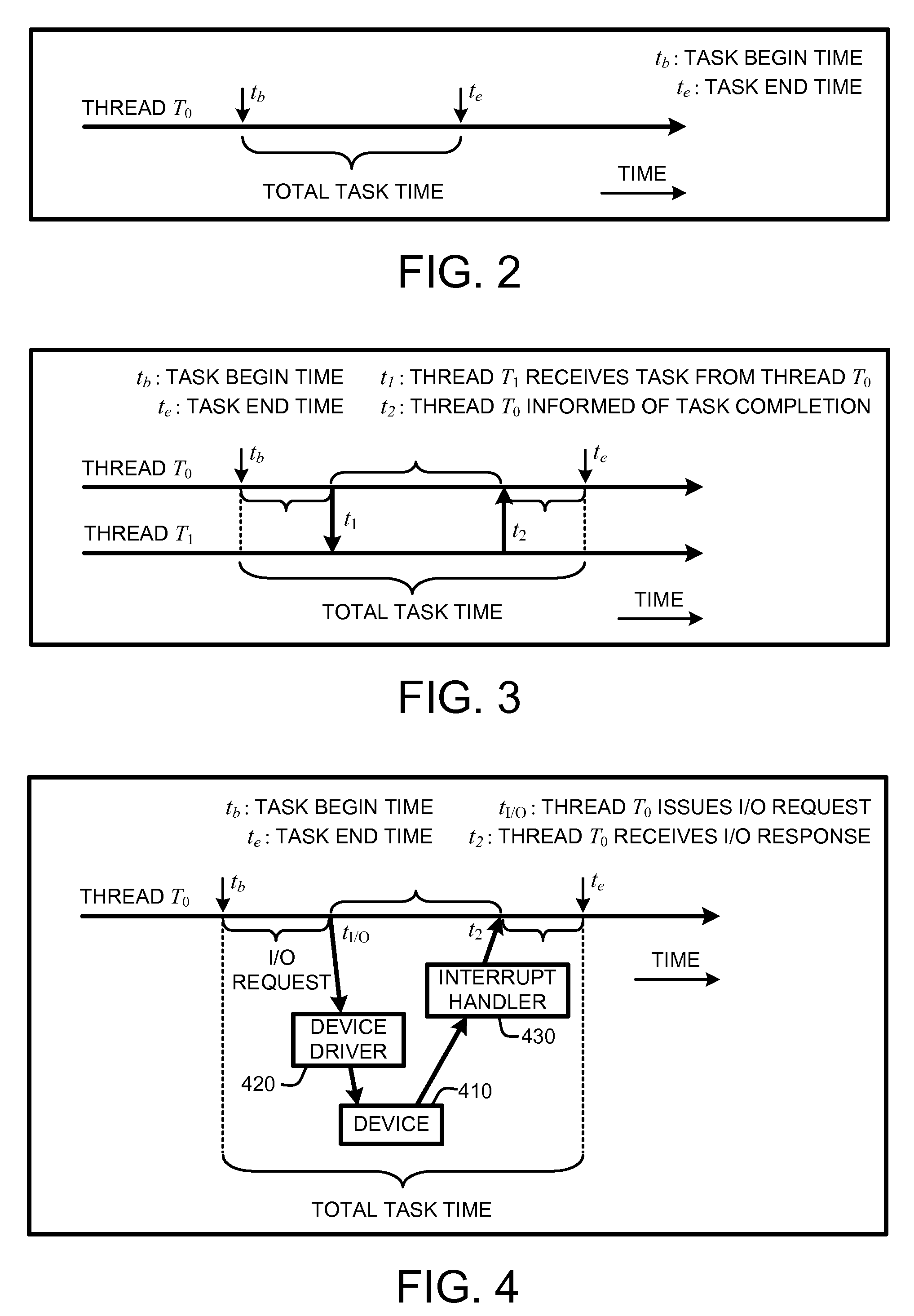Diagnosis of application performance problems via analysis of thread dependencies
a technology of dependencies and application performance, applied in the field of performance evaluation, can solve problems such as inconvenient or very difficult to avoid synchronous operations, tools do not take control flow information and the relationship between operations into account, and ui programs hang for a long tim
- Summary
- Abstract
- Description
- Claims
- Application Information
AI Technical Summary
Benefits of technology
Problems solved by technology
Method used
Image
Examples
Embodiment Construction
[0029]In the following description of the embodiments of the claimed subject matter, reference is made to the accompanying drawings, which form a part hereof, and in which is shown by way of illustration specific embodiments in which the claimed subject matter may be practiced. It should be understood that other embodiments may be utilized and structural changes may be made without departing from the scope of the presently claimed subject matter.
[0030]1.0 Introduction:
[0031]In general, a “Performance Evaluator,” as described herein, provides various techniques for using a “tracer” to record system events and inter-thread interactions and dependencies for one or more running applications. These system-level inter-thread interactions and dependencies are then evaluated to construct full or partial “control patterns.” The Performance Evaluator then uses these control patterns, or “fingerprints” constructed from the full or partial control patterns, for diagnosing root causes of interac...
PUM
 Login to View More
Login to View More Abstract
Description
Claims
Application Information
 Login to View More
Login to View More - R&D
- Intellectual Property
- Life Sciences
- Materials
- Tech Scout
- Unparalleled Data Quality
- Higher Quality Content
- 60% Fewer Hallucinations
Browse by: Latest US Patents, China's latest patents, Technical Efficacy Thesaurus, Application Domain, Technology Topic, Popular Technical Reports.
© 2025 PatSnap. All rights reserved.Legal|Privacy policy|Modern Slavery Act Transparency Statement|Sitemap|About US| Contact US: help@patsnap.com



